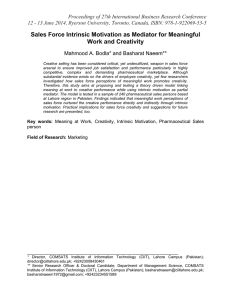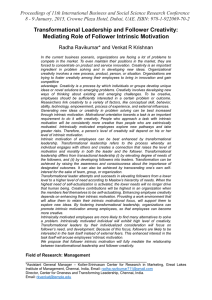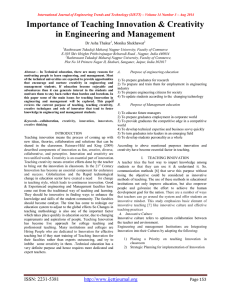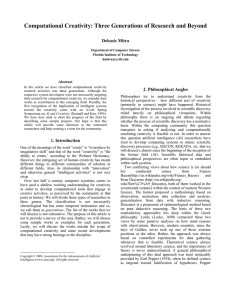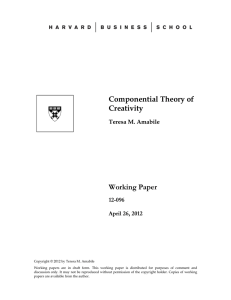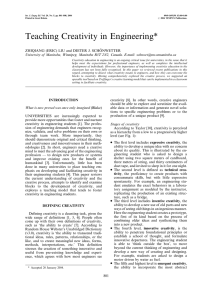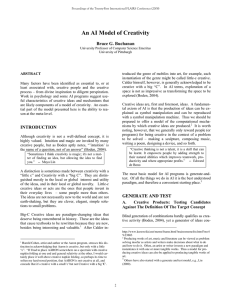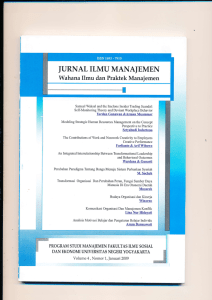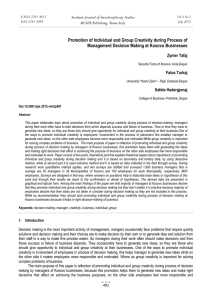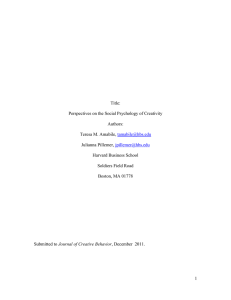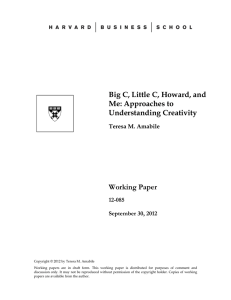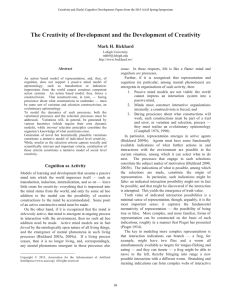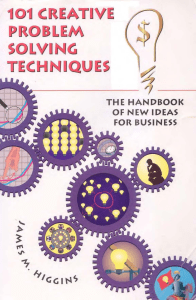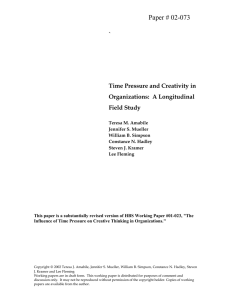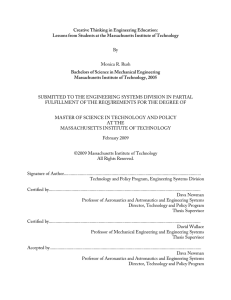EDP3004_ch8b
advertisement
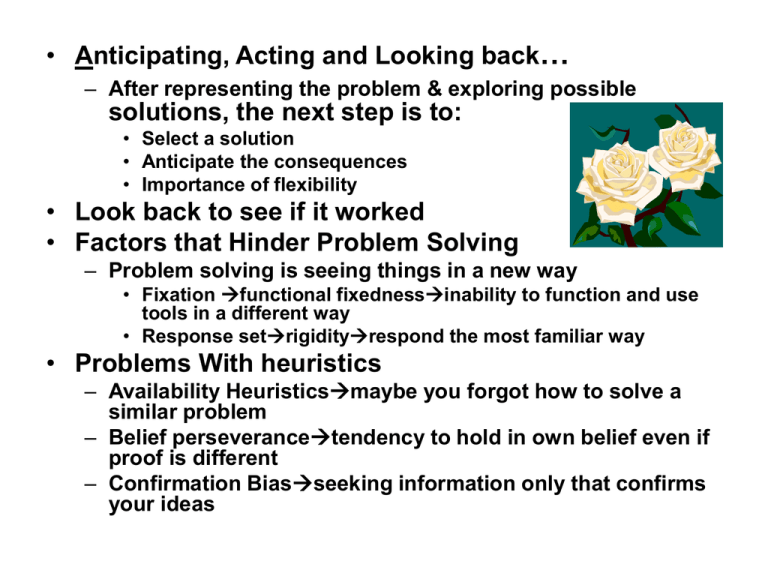
• Anticipating, Acting and Looking back… – After representing the problem & exploring possible solutions, the next step is to: • Select a solution • Anticipate the consequences • Importance of flexibility • Look back to see if it worked • Factors that Hinder Problem Solving – Problem solving is seeing things in a new way • Fixation functional fixednessinability to function and use tools in a different way • Response setrigidityrespond the most familiar way • Problems With heuristics – Availability Heuristicsmaybe you forgot how to solve a similar problem – Belief perseverancetendency to hold in own belief even if proof is different – Confirmation Biasseeking information only that confirms your ideas • Expert Knowledge and Problem Solving – Insightsuddenly realization to a solution – Memory for Patternsrecognition of what fits together – Procedural Knowledgewhat actions to take under certain conditions – Organizationelaboration and practice help organize information – Monitoringto plan and check if what is planned occurs Creativity and Creative Problems Solving • Defining creativity – – – – – Birth Intertwined with Negative Qualitiesnonconforming Fuzzyfocused and organized or nonconforming Enhanced within groupbrainstorming Sources: • Domain relevant skillscompetencies in the subject area • Creativity relevant processeswork habits and personality traits • Intrinsic task motivationfascination for the subject area • Need for incubationtime to think – Assessing creativity • Restructuring conceiving of in a different way – Divergent thinking testsmany different ideas & answers – Convergent thinking testsnarrowing possibilities to one answer – Originality and flexibilitydetermined statistically few people answer the same way – Creativity in the classroom • Brainstorming – Defer judgment/encourage wild ideas – Avoid ownership – Hitchhike on other ideas – The Big C: Revolutionary innovation • Not necessarily creativity – Avoid pushing intrinsic passion for task – Avoid freezing the child into a safe place – Be aware of psychological wounds What I am doing with this class Critical Thinking • Definition – Evaluating conclusions by logically and systematically examining the problem, the evidence and the solution • Developing Critical Thinking – Stand alone thinking skills (programs just to teach critical thinking – Examples: • Defining and clarifying the problem • Judging information related to the problem • The Language of Thinkinghow many ways can you describe XXX • Critical Thinking is Specific Subjects – Sourcinglooking at the source of information – Corroborationmaking connections between different types of information – Contextualizationimagine the time, place, people and culture where this is happening Teaching for Transfer • Definition of transfer – Influence of previously learned material – The productive (not reproductive) uses of cognitive tools and motivations. – Types: • Hi road = application of abstract knowledge • Low road = spontaneous and automatic transfer of highly practiced skills – Teaching for positive transfer • What is worth learning? • How can teachers help? – Environmentsupport constructive thinking = self regulation – Interaction and collaboration – Deal with problems that have personal meaning – A culture to develop transfer in other subject areas • Stages of Transfer – Acquisitionhow to use the strategy – Retentionoverlearning – Transferuse strategy in a new situation







